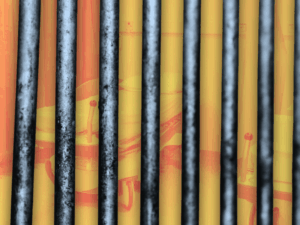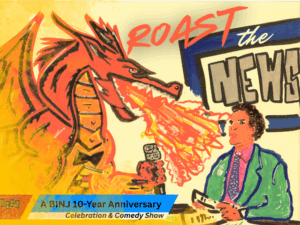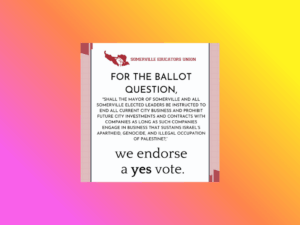A park on Somerville Avenue becomes the subject of a heated argument.
Nestled in southern Somerville sits Conway Park, a once-inviting green space with a past life of children enjoying its playground and young athletes playing on its baseball field.
However, the city restricted the public park’s recreational activities after a 2017 environmental site assessment found that chemicals had seeped into the soil, contaminating the space. Historical maps confirm that parts of the land used were occupied by bleachery and dye works companies.
Conway Park’s baseball field and a portion of the playground have remained closed since the discovery, preventing Somerville residents and families from utilizing the space to its fullest potential.
Chris Dwan, the co-chair of the Somerville Urban Forestry Committee, lives behind the park, across the train tracks. He said he doesn’t feel like he draws any benefit from Conway Park.
“I no longer consider it a green space, honestly,” Dwan said. “The decision to go with turf rather than natural grass was a loss for the ecosystem services and a loss for the environment.”
The city responded to the contamination by creating a plan to unearth 18 inches of the ground — enough soil to declare the land safe for use. A fabric tarp will be stretched over the soil, which will then be covered by artificial turf.
In October, the city approved a budget of more than nine million dollars to renew the green space. A third of the total was granted by the Environmental Protection Agency (EPA).
According to the EPA, the $3 million is solely for site cleanup, designed to “eliminate the direct contact threat and remove the source contamination by excavating and disposing of soils contaminated with [chemicals] and lead, and potentially other hazardous substances.”
The remaining funds are bookmarked for environmental remediation, artificial turf implementation, and LED sport lights.
“Green space is basically irreplaceable in the city,” Dwan said, referring to the fact that Somerville is the most densely populated city in New England, stuffing about 80,000 people into four square miles and leaving very little room for open green space.
Luisa Oliveira, the director of Public Space and Urban Forestry for Somerville, states that open space is a priority for the city. “Open space is crucial for the vitality and health of a city,” she said, while noting that natural grass is not viable in every open space.
“Our parks serve many ecological functions and provide many ecosystem service benefits. They also need to meet the needs of our residents,” Oliveira said.
In recent years, Somerville has replaced natural grass with artificial turf in multiple parks across the city. A recent post on Green and Open Somerville’s website states there are “eight plastic fields either in place, under construction, or approved for installation.”
Many residents depend on green spaces as athletic fields, a fact commonly referenced by those lobbying for artificial turf.
“Athletic fields are used by many youth athletes, and there is a shortage of playing hours to meet the demands of the recreation and athletic programs,” Oliveira said.
Meanwhile, Renee Scott, the co-founder of Green and Open Somerville, still believes the use of artificial turf is an outrage.
“The city will argue that, because they cool off at night, it’s not actually contributing to the urban heat island effect,” she said. “It’s 40° hotter than any other space near it during the day, like that is increasing the heat.”
The increased surface temperature is due to the fact that artificial turf is often composed of polyethylene plastic blades and a crumb rubber infill, according to previous local reporting. On a day with an air temperature of 98°F, this material can reach up to 200°F.
Oliveira claimed that artificial turf is better for athletic use because it does not flood like natural grass does, it cannot be easily destroyed, and it can be used year round.
However, a study conducted by physician-researchers from University Hospitals, Case Western Reserve University, and the UH Sports Medicine Institute found that athletes “were 58 percent more likely to sustain an injury during athletic activity on artificial turf.”
While the study acknowledges that artificial turf is easier to maintain, athletes should practice caution on such surfaces. During the 2017-2018 athletic season at 26 high schools, researchers recorded a total of 953 injuries — with 585 of them occurring on the artificial turf.
“Finding a balance between all the competing issues and the advocates is simply not as simple as people think,” Oliveira said. “We do not have many large parcels that are big enough for fields. It’s about the environment, but it’s also about equity and opportunity.”
Members of the public have been outspoken about the debate. Jake Wilson, a long-time resident of Somerville, serves as the President of Somerville Youth Soccer. He also has two daughters and lives nearby Conway Park.
In a blog post, Wilson said that both sides of the green space discussions fall into reductive arguments.
“Either you care about the planet and want grass fields, or you care about kids and recreation and want turf fields,” Wilson wrote. “Except most ‘Turf’ supporters I know care passionately about the environment … most of the ‘Grass’ advocates I know have kids who played sports with [Somerville Youth Soccer] or another youth sports organization.”
Wilson recommends a city incentive to create and protect both artificial and natural green spaces.
“For a city desperate to increase its limited green space, the impending loss of two-plus acres of grass at Conway is a backward step environmentally,” he wrote.
Since artificial turf can be implemented anywhere, it does not have to cover the existing green spaces, he wrote. Wilson also recommended residential areas and neighborhood parks for natural grass, whereas school-yards and rooftop athletic fields should be used for artificial turf.
Dwan, also a long-time Somerville resident, is not very optimistic about the success of community efforts on either end. “It takes a blood sacrifice to get anything done in this town,” he said.
“We’re never going to get the park space back,” Dwan said.
Somerville residents hoping to unite the community on a decision for the city’s green spaces may have to encourage the formation of a coalition of both sides.
“We don’t have the space in Somerville to build enough grass fields to spread usage like suburban towns do,” Wilson said. “The discourse in our public meetings about fields makes our national political climate look civil by comparison.”
This article was produced by students in Prof. Gino Canella’s Grassroots Journalism course at Emerson College for the Somerville Wire.
The Somerville Wire is an initiative of the Somerville News Garden project of the Boston Institute for Nonprofit Journalism. All Somerville Wire articles may be republished by community news outlets free of charge with permission and by larger commercial news outlets for a fee. Republication requests and all other inquires should be directed to somervillewire@binjonline.org.








